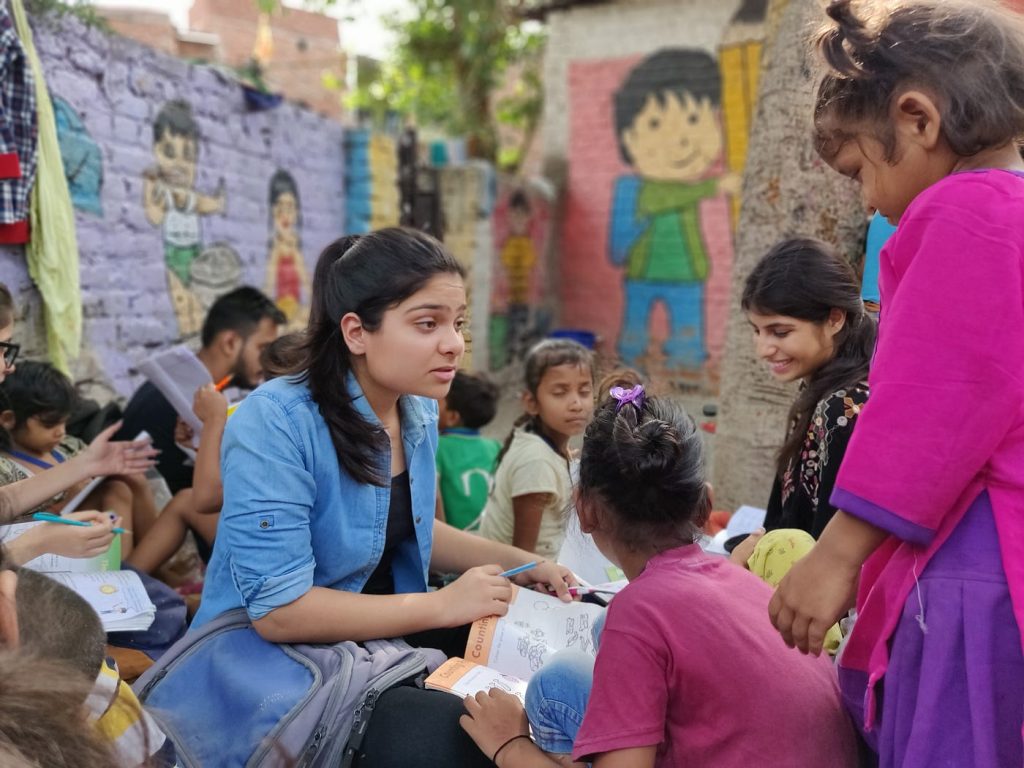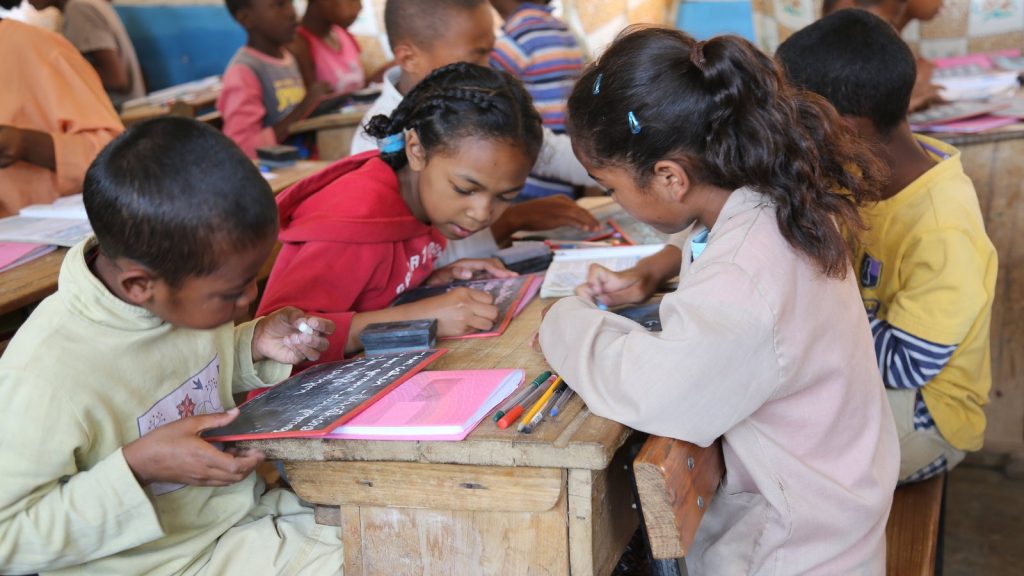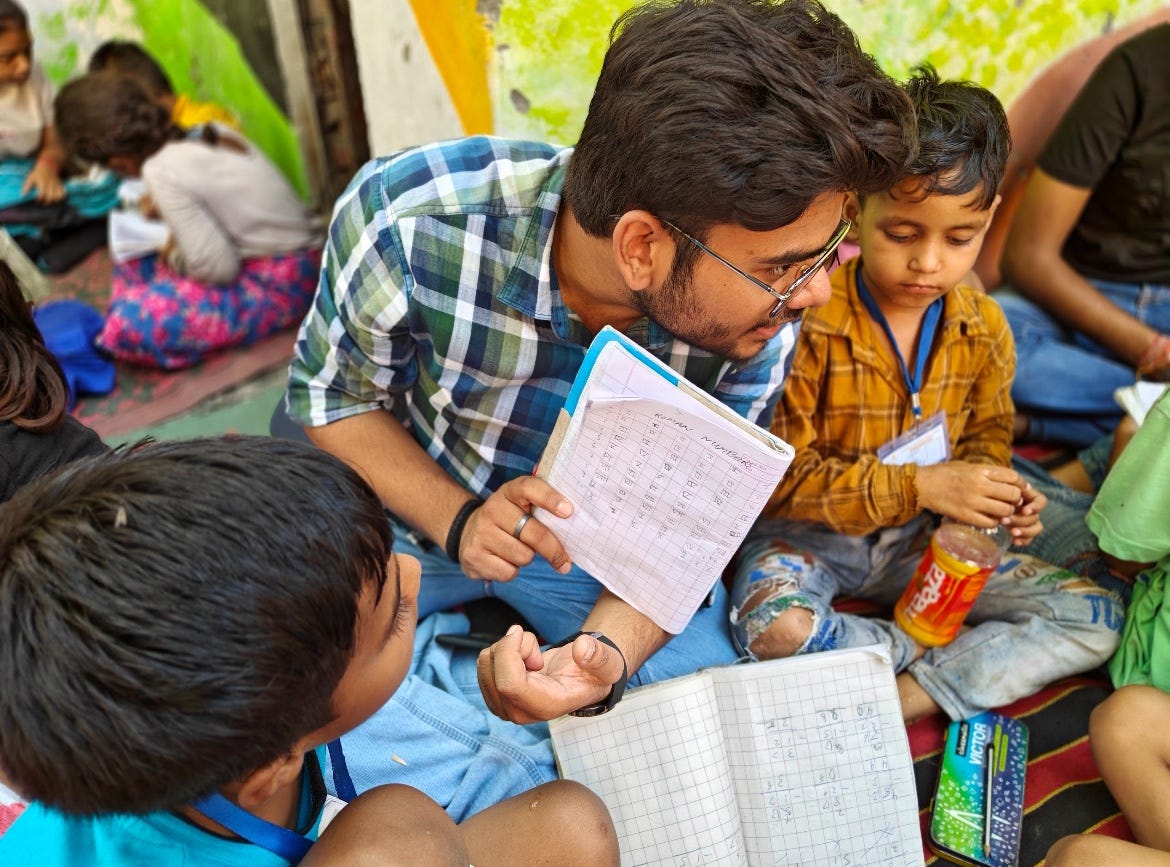Bridging Gaps: How Education Brings Hope to Impoverished Children, Education Empowering Impoverished Children
In the quest for quality education, underprivileged children worldwide face formidable obstacles that hinder their access to learning opportunities. Economic constraints present a significant hurdle, as families grappling with poverty often find themselves unable to afford even the most basic educational necessities, such as school fees and supplies. Consequently, children are compelled to forgo schooling and instead contribute to household income, perpetuating a cycle of deprivation. Additionally, inadequate infrastructure in marginalized communities further compounds these challenges, with many schools lacking essential facilities like classrooms and clean water, creating inhospitable learning environments. In this article we delve in Education Empowering Impoverished Children subject.

Overcoming Educational Barriers for Underprivileged Children
Underprivileged children encounter numerous barriers when trying to access quality education worldwide. Firstly, economic constraints pose a significant challenge, as many families living in poverty struggle to afford basic necessities, let alone school fees, uniforms, and supplies. This financial burden often forces children to forego education and instead contribute to household income through labor, perpetuating the cycle of poverty. Secondly, inadequate infrastructure and resources in marginalized communities further hinder educational access. Many schools lack proper facilities, such as classrooms, desks, books, and even clean water and sanitation, making learning environments inhospitable and conducive to dropout rates.
Moreover, societal norms and cultural biases often discriminate against certain groups, particularly girls, limiting their educational opportunities. Gender inequality deprives millions of girls of their right to education, with families prioritizing sons’ schooling over daughters’. Early marriage and societal expectations of gender roles relegate girls to domestic duties, denying them the chance to pursue academic aspirations. Additionally, children living in conflict-affected regions face heightened challenges, as armed conflict disrupts schooling, displaces families, and destroys educational infrastructure, leaving them vulnerable to exploitation and recruitment into armed groups.
Furthermore, children with disabilities encounter significant barriers to education due to inaccessible schools, lack of specialized support services, and stigma within communities. The absence of inclusive policies and accommodations marginalizes these children, denying them their right to learn alongside their peers. Additionally, geographic remoteness and inadequate transportation options isolate many rural and indigenous communities, making it difficult for children to access schools located far away. These systemic barriers perpetuate educational inequity and widen the gap between privileged and underprivileged children.
Despite these challenges, “Education Empowering Impoverished Children” remains a potent force for change, offering a pathway out of poverty and a means to break the cycle of deprivation. By addressing these barriers through targeted interventions, including scholarships, school feeding programs, community outreach initiatives, and advocacy for policy reforms, we can create a more equitable and inclusive educational landscape where all children have the opportunity to thrive and realize their full potential.
Education Empowering Impoverished Children through Education
Various stakeholders play crucial roles in bridging the educational gap for underprivileged children, with their collective efforts aimed at ensuring access to quality education and opportunities for all. NGOs are at the forefront of this endeavor, implementing grassroots initiatives to provide educational support and resources to marginalized communities. Through the establishment of schools, development of innovative learning programs, and provision of scholarships and educational materials, NGOs work tirelessly to empower underprivileged children and create pathways for their academic success.
Governments also play a pivotal role in addressing the educational gap through policy development, funding allocation, and program implementation. By investing in infrastructure development, teacher training, and targeted support systems, governments strive to create inclusive education systems that provide equal opportunities for all children. Additionally, policies promoting free and compulsory education, as well as initiatives to address gender and social inequalities, are essential for ensuring that underprivileged children have access to quality schooling.
Corporations contribute to bridging the educational gap through corporate social responsibility (CSR) initiatives focused on education. Many corporations invest in educational projects, fund schools, sponsor scholarships, and provide resources and infrastructure to support underprivileged children’s access to quality education. By leveraging their resources and expertise, corporations can make significant contributions to improving educational outcomes and empowering disadvantaged communities.
Local communities also play a critical role in supporting underprivileged children’s education through grassroots efforts and community-driven initiatives. Community centers, volunteer programs, and mentoring initiatives create a supportive environment where children can thrive academically and personally. Additionally, community engagement and advocacy efforts are essential for raising awareness about the importance of education and mobilizing support for educational initiatives.
Overall, the collective efforts of NGOs, governments, corporations, and local communities are instrumental in bridging the educational gap and ensuring that underprivileged children have access to the transformative power of education. Through their commitment and collaboration, these stakeholders contribute to “Education Empowering Impoverished Children” and creating a more equitable and inclusive society where every child has the opportunity to learn, grow, and succeed.

Breaking Barriers: Gender Inequality and Education Empowering Impoverished Children
Gender inequality plays a significant role in determining access to education for underprivileged children in developing countries, perpetuating a cycle of disadvantage and limiting opportunities for millions of girls worldwide. In many developing nations, deep-rooted societal norms and cultural beliefs prioritize boys’ education over girls’, leading to stark disparities in access to schooling based on gender. Girls often face multiple barriers that hinder their ability to pursue education, including early marriage, household responsibilities, and cultural biases that prioritize sons’ education.
“Educational Empowering Impoverished Children” is hindered by gender-based discrimination, which results in girls being disproportionately affected by limited access to schooling. In patriarchal societies, girls are often expected to prioritize domestic duties over education, with families investing fewer resources in their daughters’ schooling compared to their sons’. This perpetuates a cycle of poverty and inequality, as girls are denied the opportunity to develop the skills and knowledge necessary to break free from the constraints of their circumstances.
Moreover, gender-based violence and insecurity further exacerbate barriers to education for girls in developing countries. Fear of violence, harassment, and sexual assault on the way to school or within educational institutions deters many girls from pursuing education. Additionally, cultural practices such as female genital mutilation and child marriage perpetuate gender inequality and limit girls’ educational opportunities, reinforcing entrenched systems of oppression and marginalization.
Efforts to address gender inequality in education require multifaceted approaches that tackle systemic barriers and promote gender equity at all levels of society. This includes implementing policies that guarantee equal access to education for girls and boys, addressing cultural norms and stereotypes that perpetuate gender discrimination, and investing in programs that empower girls and promote their rights to education.
Overcoming Challenges: Prioritizing Education for Underprivileged Families
Furthermore, initiatives aimed at “Education Empowering Impoverished Children” must prioritize girls’ education and address the specific challenges they face, including providing safe and supportive learning environments, addressing gender-based violence, and promoting girls’ leadership and empowerment. By dismantling barriers to girls’ education and promoting gender equity in education, societies can unlock the full potential of all children and create a more just and inclusive world.
In developing countries, underprivileged families often face complex challenges when it comes to prioritizing education among their children, navigating a landscape shaped by poverty, social norms, and limited access to resources. Despite these obstacles, “Education Empowering Impoverished Children” remains a cornerstone of hope and opportunity for many families, representing a pathway to a better future and improved socioeconomic outcomes.
For underprivileged families, the decision to prioritize education among their children is often influenced by a combination of factors, including economic constraints, cultural beliefs, and societal pressures. In many cases, poverty poses a significant barrier to accessing education, as families struggle to afford school fees, uniforms, and other related expenses. As a result, underprivileged families may be forced to make difficult choices about which children can attend school and which must forgo education in favor of contributing to household income through labor or domestic work.
Despite these challenges, “Education Empowering Impoverished Children” is often viewed as a means of breaking the cycle of poverty and improving future prospects for the entire family. Many underprivileged parents recognize the transformative power of education and make sacrifices to ensure their children have access to learning opportunities, even in the face of financial hardship. Moreover, education is seen as a form of social mobility, offering the possibility of upward mobility and improved socioeconomic status for future generations.
Social norms and cultural attitudes also play a crucial role in shaping attitudes toward education within underprivileged communities. In some cultures, there may be traditional gender roles that prioritize boys’ education over girls’, leading to disparities in access to schooling based on gender. Additionally, cultural beliefs about the value of education, the role of children in contributing to family income, and the importance of traditional livelihoods may influence families’ decisions about investing in education.
Despite these challenges, grassroots initiatives and community-led efforts are working to overcome barriers to education and promote “Education Empowering Impoverished Children” within underprivileged communities. By addressing systemic issues such as poverty, gender inequality, and social exclusion, these initiatives aim to create a more inclusive and equitable education system that ensures all children have the opportunity to learn and thrive. Through collective action and collaboration between governments, NGOs, and local communities, we can work towards a future where every child has access to quality education and the opportunity to reach their full potential.




